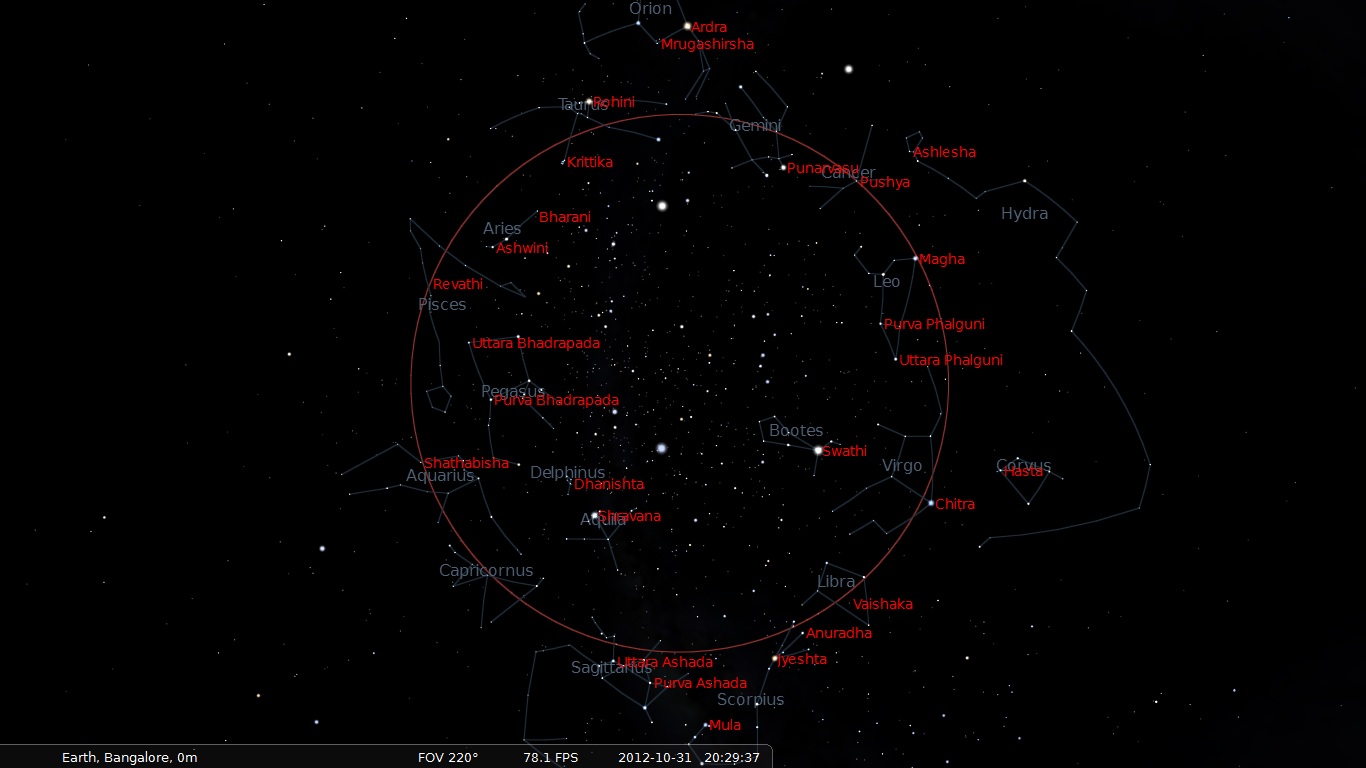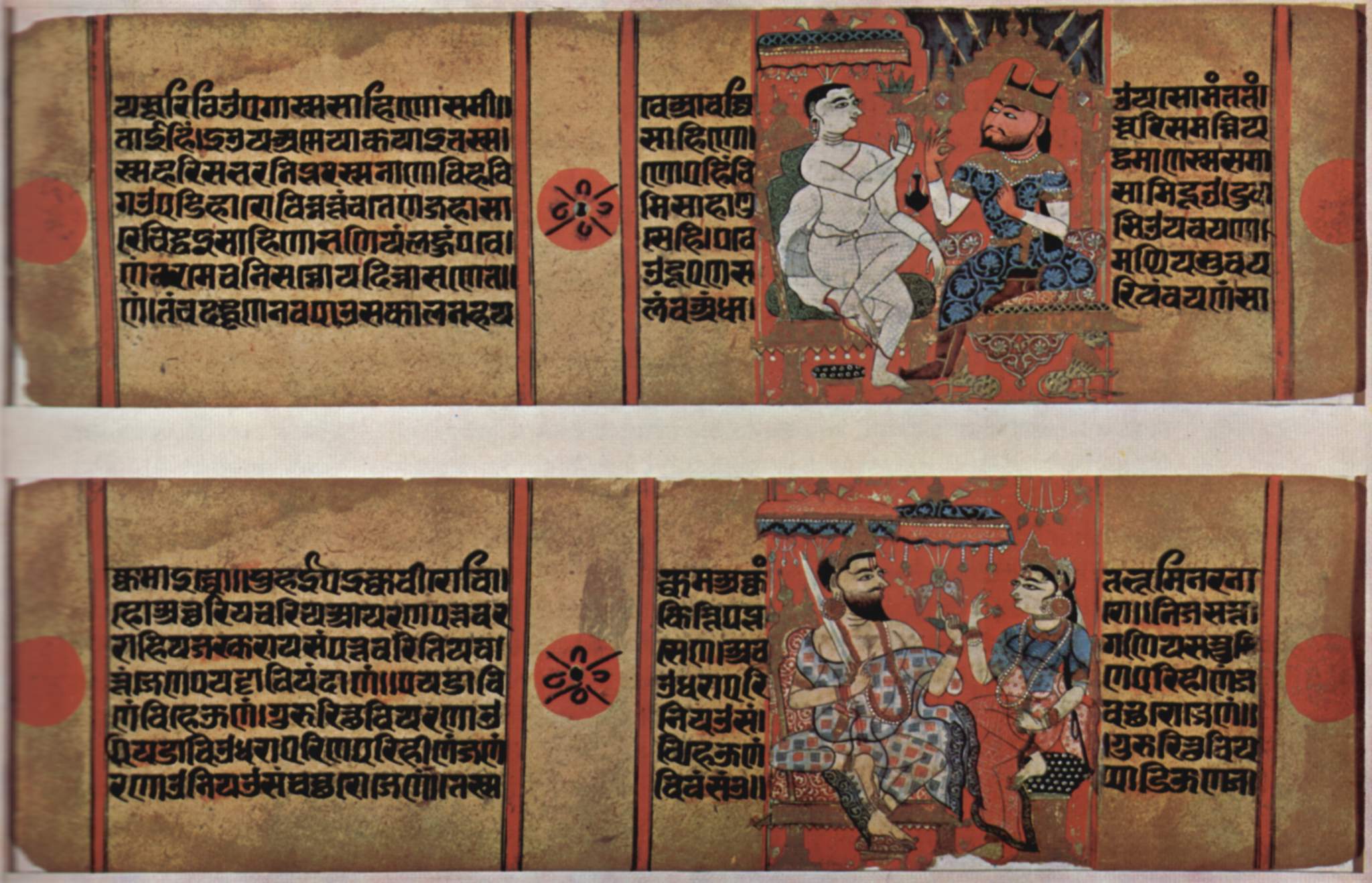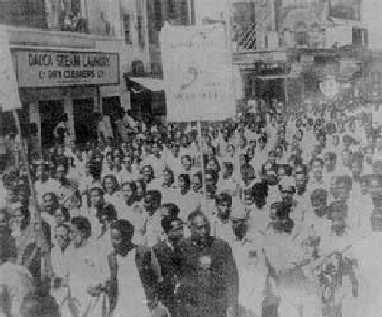|
Phalgun
Falgun or Phalgun (; ) or Phagun () is the eleventh month of the year in the Bengali calendar, the Assamese calendar, and the Nepali calendar. In the revision of the Bengali calendar used in Bangladesh since October 2019, the month has 29 days in common years or 30 in leap years of the Gregorian calendar. In the previous version of the calendar, used in Bangladesh from 1987 through October 2019, Falgun had 30 days in common years or 31 days in leap years. The month has 29 or 30 days, based on the true movements of the Sun, in the old non-reformed Bengali calendar, still used in West Bengal, and in the Nepali calendar. Falgun was named for the ''nakshatra'' (lunar mansion) ''Uttara phalguni'', in the vicinity of which the full moon appears at that time of the year. It marks the arrival of spring, the sixth and final season in Bangladesh, West Bengal, Assam, and Nepal. Falgun falls between mid-February and mid-March on the Gregorian calendar. Observances * Falgun 1 – Pahela F ... [...More Info...] [...Related Items...] OR: [Wikipedia] [Google] [Baidu] |
Nakshatra
Nakshatra () is the term for Lunar mansion in Hindu astrology and Buddhist astrology. A nakshatra is one of 27 (sometimes also 28) sectors along the ecliptic. Their names are related to a prominent star or asterisms in or near the respective sectors. In essence (in Western astronomical terms), a nakshatra simply is a constellation. Every nakshatra is divided into four ''padas'' ( "steps"). The starting point for the nakshatras according to the ''Vedas'' is "Krittika" (it has been argued, because the Pleiades may have started the year at the time the ''Vedas'' were compiled, presumably at the vernal equinox), but, in more recent compilations, the start of the nakshatras list is the point on the ecliptic directly opposite the star Spica, called ''Chitrā'' in Sanskrit. This translates to Ashwinī, a part of the modern constellation of Aries. These compilations, therefore, may have been compiled during the centuries when the sun was passing through Aries at the time of the ver ... [...More Info...] [...Related Items...] OR: [Wikipedia] [Google] [Baidu] |
Holi
Holi () is a major Hindu festival celebrated as the Festival of Colours, Love and Spring.The New Oxford Dictionary of English (1998) p. 874 "Holi /'həʊli:/ noun a Hindu spring festival ...".Yudit Greenberg, Encyclopedia of Love in World Religions, Volume 1, , p. 212 It celebrates the eternal and divine love of the deities Radha and Krishna.R Deepta, A.K. Ramanujan's ‘Mythologies’ Poems: An Analysis, Points of View, Volume XIV, Number 1, Summer 2007, pp. 74–81 Additionally, the day signifies the triumph of good over evil, as it commemorates the victory of Vishnu as Narasimha over Hiranyakashipu.; Holi originated and is predominantly celebrated in the Indian subcontinent, but has also spread to other regions of Asia and parts of the Western world through the Indian diaspora.Ebeling, Karin (10), Holi, an Indian Festival, and its Reflection in English Media; Die Ordnung des Standard und die Differenzierung der Diskurse: Akten des 41. Linguistischen Kolloquiums in Mannhe ... [...More Info...] [...Related Items...] OR: [Wikipedia] [Google] [Baidu] |
Maha Shivaratri
Maha Shivaratri is a Hindu festival celebrated annually to worship the deity Shiva, between February and March. According to the Hindu calendar, the festival is observed on the fourteenth day of the first half (night start with darkness - waning) of the lunar month of Phalguna. The festival commemorates the marriage of Shiva and Parvati, and the occasion of Shiva performing his ritual dance called tandava. It is a notable festival in Hinduism, marking a remembrance of "overcoming darkness and ignorance" in life and the world. It is observed by remembering Shiva and chanting prayers, fasting, and meditating on ethics and virtues such as honesty, non-injury to others, charity, forgiveness, and the discovery of Shiva. Ardent devotees stay awake throughout this night. Others visit one of the Shiva temples or go on a pilgrimage to the Jyotirlingams. The festival is believed to have originated in 5th century BCE. In Kashmir Shaivism, the festival is called Har-ratri or pho ... [...More Info...] [...Related Items...] OR: [Wikipedia] [Google] [Baidu] |
Lunar Mansion
Often called lunar mansion, a lunar station or lunar house is a segment of the ecliptic through which the Moon passes in orbit of the Moon, its orbit around the Earth. The concept was used by several ancient cultures as part of their calendrical system. Stations in different cultures In general, though not always, the zodiac is divided into 27 or 28 segments relative to the March Equinox, vernal equinox point or the fixed stars – one for each day of the lunar month. (A Lunar month#Sidereal month, sidereal month lasts about days.) The Moon's position is charted with respect to those fixed segments. Since the Moon's position at any given stage will vary according to Earth's position in Earth's orbit, its own orbit, lunar stations are an effective system for keeping track of the passage of seasons. Various cultures have used sets of lunar stations astrology, astrologically; for example, the Jyotisha astrological ''nakshatras'' of Hindu culture, the Arabic manzils (''ma ... [...More Info...] [...Related Items...] OR: [Wikipedia] [Google] [Baidu] |
Bikram Sambat
Vikram Samvat (ISO: ''Vikrama Saṁvata''; abbreviated VS), also known as the Vikrami calendar is a Hindu calendar historically used in the Indian subcontinent and still also used in several Indian states and Nepal. It is a lunisolar calendar, using twelve to thirteen lunar months each solar sidereal years. The year count of the Vikram Samvat calendar is usually 57 years ahead of the Gregorian calendar, except during January to April, when it is ahead by 56 years. Vikram Samvat is an official calendar of Nepal. And unlike India where it is used only for religious dates, the solar version of Vikram Samvat is an official calendar used for everything from school sessions to legal contracts to any official functions. History A number of ancient and medieval inscriptions used the Vikram Samvat. Although it was reportedly named after the legendary king Vikramaditya, the term "Vikrama Samvat" does not appear in the historical record before the 9th century; the same calendar syste ... [...More Info...] [...Related Items...] OR: [Wikipedia] [Google] [Baidu] |
Dol Purnima
Dol Purnima, also popularly known as Dol Jatra, Dola Jatra, Doul Utsav or Deul, is a Hindu swing festival celebrated during the Holi festival of Assam, Bengal, Braj region, Gujarat, Odisha, Rajasthan, and Tripura. This festival is dedicated to the divine couple of Radha and Krishna. It is usually celebrated on the full moon night or fifteenth day of the Falgun month mainly by Gopal community. Etymology and references in literature Hindu literature is replete with references of terms like ''Dolotsava'' and ''Dola Yatra''. '' Garga Samhita'', a Vaishnav text has reference to ''Dolotsava'' of Shri Krishna in the month of Chaitra. The Sanskrit word ''Dola'' means a swing, while ''utsava'' means a festival or a feast. Hence, ''Dolotsava'' literally means swing festival or swing feast and refers to religious service of swinging the idol of a deity on a swing. Similarly, word ''Dola Yatra'' is compound of two Sanskrit words: ''Dola'' and ''yatra'' . ''Yatra'' refers to proces ... [...More Info...] [...Related Items...] OR: [Wikipedia] [Google] [Baidu] |
Pohela Falgun
Pohela Falgun () is a festival observed the first day of Spring of the Bengali month of Falgun in Bangladesh. The celebration was started in 1991 by students of Dhaka University's Faculty of Fine Arts. Before 2019, the first of Falgun used to fell on 13 February of the Gregorian Calendar, however, from 2020 onwards, due to changes to the Bangladeshi calendars, Pohela Falgun is celebrated on 14 February, making the day celebrated with the Valentine's Day in the country. In this day Bengalis are seen to wear traditional clothes consisting of yellow , red and even shades of orange. Some females even prefers to wear bangles and floral ornaments. Etymology In Bengali, Pohela stands for 'first' and 'Falgun' is the eleventh month of the Bengali calendar. See also * Pohela Boishakh * Culture of Bangladesh The culture of Bangladesh is intertwined with the culture of the ''Bengal region'' of the Indian subcontinent. It has evolved over the centuries and encompasses the cultura ... [...More Info...] [...Related Items...] OR: [Wikipedia] [Google] [Baidu] |
Nepal
Nepal, officially the Federal Democratic Republic of Nepal, is a landlocked country in South Asia. It is mainly situated in the Himalayas, but also includes parts of the Indo-Gangetic Plain. It borders the Tibet Autonomous Region of China China–Nepal border, to the north, and India India–Nepal border, to the south, east, and west, while it is narrowly separated from Bangladesh by the Siliguri Corridor, and from Bhutan by the States and union territories of India, Indian state of Sikkim. Nepal has a Geography of Nepal, diverse geography, including Terai, fertile plains, subalpine forested hills, and eight of the world's ten List of highest mountains#List, tallest mountains, including Mount Everest, the highest point on Earth. Kathmandu is the nation's capital and List of cities in Nepal, its largest city. Nepal is a multi-ethnic, multi-lingual, multi-religious, and multi-cultural state, with Nepali language, Nepali as the official language. The name "Nepal" is first record ... [...More Info...] [...Related Items...] OR: [Wikipedia] [Google] [Baidu] |
Culture Of Bangladesh
The culture of Bangladesh is intertwined with the culture of the ''Bengal region'' of the Indian subcontinent. It has evolved over the centuries and encompasses the cultural diversity of several social groups of Bangladesh. The Bengal Renaissance of the 18th early 19th centuries, noted Bengali writers, saints, authors, scientists, researchers, thinkers, music composers, painters, film-makers have played a significant role in the development of Bengali culture. The culture of Bangladesh is deeply intertwined with the culture of the Bengal region. Basically, Bengali culture refers to the culture of Bangladesh. The Bengal Renaissance contained the seeds of a nascent political Indian nationalism which was the precursor in many ways to modern Indian artistic cultural expression. According to M. Nazrul Islam Tamij, a human rights activist and chairman of the National Human Rights Society (NHRS), human rights are the most important part of Bengali culture, and it plays an import ... [...More Info...] [...Related Items...] OR: [Wikipedia] [Google] [Baidu] |
Bangla Calendar
The Bengali Calendar or Bangla Calendar (, colloquially , or , , "Bangla Year") is a solar calendar used in the Bengal region of the Indian subcontinent. In contrast to the traditional Indian Hindu calendar, which begins with the month Chaitra, The Bengali Calendar starts with Baishakh. A revised version of the Bangladeshi calendar is officially used in Bangladesh, while an earlier, traditional version continues to be followed in the Indian states of West Bengal, Tripura, and Assam. The Bengali calendar began in 590–600 CE to commemorate the ascension of Shashanka, the first independent king in Bengal's unified polity. Some modifications were done to the original calendar during Mughal emperor Akbar's era, to facilitate the collection of land revenue at the start of bengali harvesting season. The first day of the Bengali year is known as Pohela Boishakh (1st of Boishakh) which is a public holiday in Bangladesh. The Bengali era is called ''Bengali Sambat'' (BS) and has a ze ... [...More Info...] [...Related Items...] OR: [Wikipedia] [Google] [Baidu] |
International Mother Language Day
International Mother Language Day is a worldwide annual observance held on 21 February to promote awareness of linguistic and cultural diversity and to promote multilingualism. First announced by UNESCO on 17 November 1999, it was formally recognized by the United Nations General Assembly with the adoption of UN resolution 56/262 in 2002. Mother Language Day is part of a broader initiative "to promote the preservation and protection of all languages used by people of the world" as adopted by the UN General Assembly on 16 May 2007 in UN resolution 61/266, which also established 2008 as the International Year of Languages. The idea to celebrate International Mother Language Day was the initiative of Bangladesh. In Bangladesh, is the anniversary of the day when the Bengalis of the then-Pakistani province of East Bengal (which is now the independent state of Bangladesh) fought for recognition of their Bengali language as Official Central State Languages instead of Provincial Langu ... [...More Info...] [...Related Items...] OR: [Wikipedia] [Google] [Baidu] |
Language Martyrs' Day
The Language Movement Day (), officially called Language Martyrs' Day (), is a national holiday of Bangladesh taking place on 21 February each year and commemorating the Bengali language movement and its martyrs. On this day, people visit Shaheed Minar to pay homage to the movement's martyrs and arrange seminars discussing and promoting Bengali as the state language of Bangladesh. Background After the partition of India in 1947, Bengali-speaking people in East Bengal, the non-contiguous eastern part of the Dominion of Pakistan, made up 44 million of the newly formed Dominion of Pakistan's 69 million people. The Dominion of Pakistan's government, civil services, and military, however, were dominated by personnel from the western wing of the Dominion of Pakistan. In 1947, a key resolution at a national education summit in Karachi advocated Urdu as the sole state language and its exclusive use in the media and in schools. Opposition and protests immediately arose. Students from D ... [...More Info...] [...Related Items...] OR: [Wikipedia] [Google] [Baidu] |







